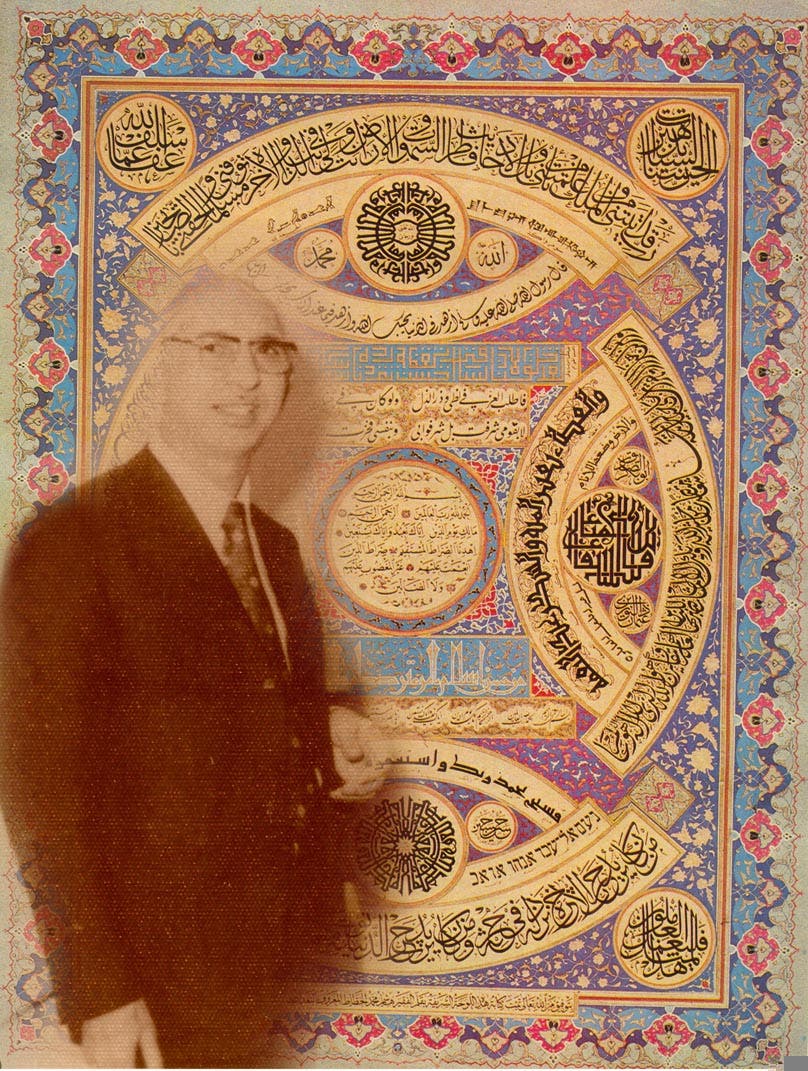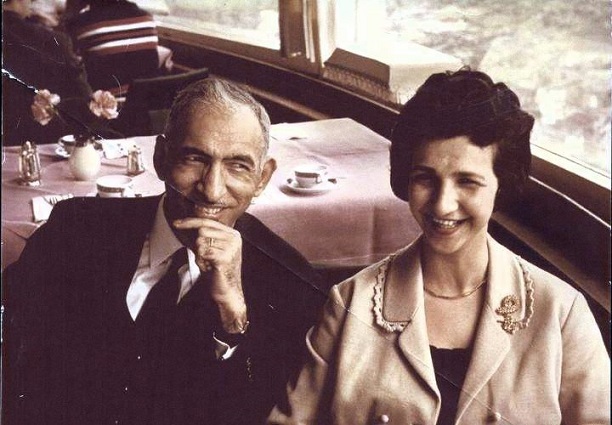
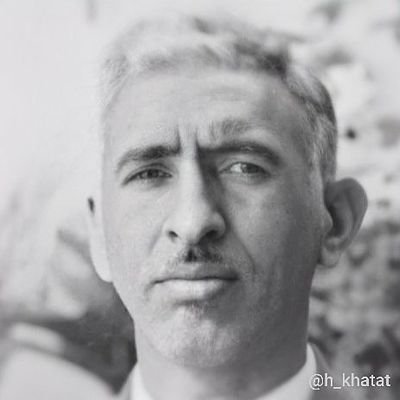
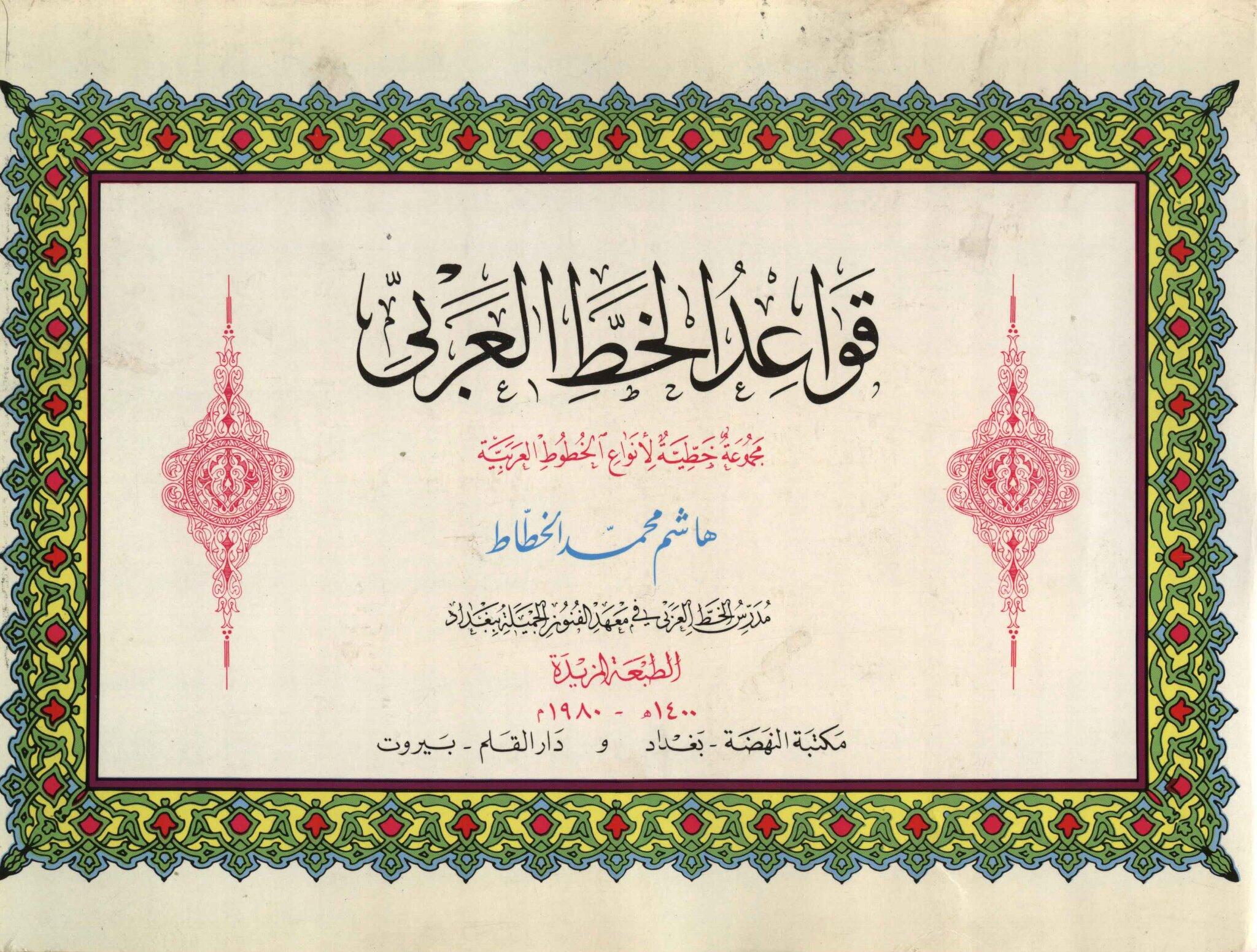

Fareed Zaffour
خمس للفنان الراحل هاشم الخطاط البغدادي وارشيف كامل للخطاط مهدي الجبوري والخطاط طارق العزاوي الفنان الراحل هاشم الخطاط (ولد الخط ومات في بغداد)!! هذه العبارة الشهيرة قد قالها الخطاط التركي الشهير (حامد الآمدي) بمناسبة وفاة الخطاط العراقي الكبير (هاشم الخطاط). وكان يقصد بالولادة الخطاط العراقي العباسي (ابن البواب)، أما الموت فهو موت (هاشم الخطاط) عام1973 . وقد استمد العراقيون براعتهم في الخط العربي من ميراثهم العريق في ابداعهم لأول خط في تاريخ البشرية، الخط المسماري، ثم بعده الخط (الآرامي السرياني) الذي منه اشتق الخط العربي، وبالذات شكله الكوفي. منذ الخط الكوفي الأول الذي كتب به القرآن الكريم وحتى يومنا هذا كان للخطاطين العراقيين السبق في الإبداع. هذا البحث أُضمامة لترجمة يسيرة لأشهر الخطاطين العراقيين الذين سطروا إبداعهم بالحبر والورق ليبقى مدى الأيام يشير لسبقهم وإبداعهم المتميز في مختلف الفنون.الوزير أبو علي ابن مقلةأبو علي محمد بن علي بن الحسين بن مقلة، المولود ببغداد سنة 272 هـ، وهو الذي وضع القواعد المهمة في تطوير الخط العربي، وقياس أبعاده، وأوضاعه، ويعد المؤسس الأول لقاعدتي خطي الثلث والنسخ. وعلى طريقته سار الخطاطون من بعده. ومن نكبات الدهر أن تقطع يده اليمنى، فما كان منه إلاّ أن يشدّ القلم على ساعده، ويكتب، وكان يكتب بيسراه أيضاً كتابة جيدة، توفي سنة 328 هـ.علي بن هلال البغدادي (ابن البواب)أبو الحسن علي بن هلال بن عبد العزيز المشهور بابن البواب البغدادي، كان في شبابه مزوّقا يشتغل بتصوير الدور والكتب والدواوين، ثم تعشق فن الخط، والتمع نبوغه، أتقن قاعدة ابن مقلة ثم جودها وحسّنها، وأبدع في أوضاع الحروف العربية وأبعادها، توفي سنة 413 هـ.ياقوت المستعصميــــــــــــــــــــــــــــــــــــــــــــــــــــــــــــــــــــــhttp://www.almooftah.comhttp://www.almooftah.com/vb/showthread.php?p=294045…
ـــــــــــــــــــــــــــــــ
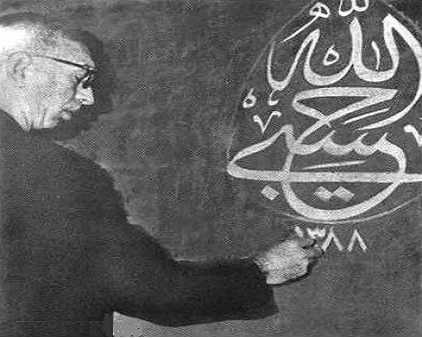
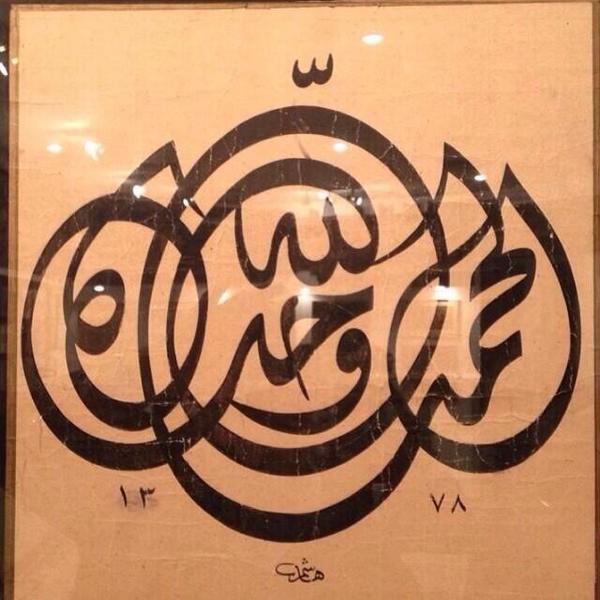
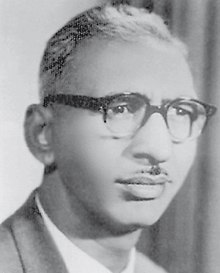
من ويكيبيديا،
معلومات شخصية
الميلاد
1339 هـ / 1921م
بغداد،
 العراق
العراقالوفاة
1393 هـ / 1973م
بغداد،
 العراق
العراقالجنسية
عراقي
الحياة العملية
تعلم لدى
حامد الآمدي
التلامذة المشهورون
وليد الأعظمي، وعثمان طه
المهنة
الخط العربي
اللغات
العربية
هاشم البغدادي هو خطاط عراقي معروف على المستوى العربي والإسلامي بإتقانه التام للخط العربي وبرونقه الجميل الذي خط به حروف القرآن، ولد هاشم في بغداد عام 1339 هـ / 1921م، وأخذ الخط عن الإستاذ علي صابر الخطاط و الملا عارف الشيخلي الذي أجازه في الخط عام 1943م، وأجازه كذلك الخطاط التركي المشهور موسى عزمي والمعروف باسم حامد الآمدي وقد أجازه مرّتين الأولى في عام(1370هـ/ 1950م)، والثانية في عام(1372هـ/ 1952م)، بإجازة عامة، [1] وكانت الإجازة الثانية بمثابة إجازة تقديرية وليست إجازة بالمعنى الحرفي، وعند وفاة هاشم البغدادي، قال الخطاط حامد الآمدي المقولة المشهورة “ولد الخط وتوفي في العراق”.
حياته وأعماله
صورة جماعية يظهر فيها الخطاط محمد حسني البابا، وهاشم محمد البغدادي، وتتوسطهم نجاة الصغيرة
وله إسهامات كثيرة ومتنوعة في الخط العربي، خصوصاً على عدد من مساجد بغداد ومنها جامع الحاج بنية. ومن خطوطه في المساجد أيضاً يوجد له شريط من أروع مايكون خلفية سوداء وخط أصفر بخطه على جامع الحيدرخانة قرب شارع المتنبي في بغداد كتبه عام 1390هـ. ولقد اشتغل خطاطاً في مديرية المساحة العامة في بغداد، وله من الآثار الفنية الكثيرة على المسكوكات العراقية و التونسية و المغربية والليبية و السودانية. وسافر لعدة بلدان منها مصر حيث قدم للامتحان في القاهرة عن طريق مدرسة تحسين الخطوط الملكية في الإسكندرية وحصل على شهادة الدبلوم بدرجة امتياز عام 1945م.
حصل على إجازات عديدة من مختلف الخطاطين منهم الخطاط المصري (محمد حسني والخطاط المصري سيد إبراهيم)، واشتغل موظفا في مديرية المساحة العامة ببغداد. وأرسل موفداً إلى ألمانيا من قبل وزارة الأوقاف العراقية للأشراف على طبع القرآن في إحدى مطابع ألمانيا عام 1979م. واستطاع أن يعيد لبغداد مجدها القديم في الخط العربي، وله الكثير من اللوحات الفنية في متحف الفنانين الرواد.
تلاميذه
تخرج على يديه الكثير من الطلبة البارزين في الخط العربي ومنهم الخطاط الشاعر وليد الأعظمي والخطاط صادق الدوري، والخطاط عبد الغني العاني والخطاط طه البستاني، والخطاط جمال الكباسي.
من مؤلفاته
أصدر كراسة حول قواعد الخط العربي عام 1961م. ما زالت تدرس في كثير من معاهد الخط.
وفاته
توفي في شهر ربيع الأول / نيسان من عام 1393 هـ / 1973م.


Hashem Muhammad al-Baghdadi
From Wikipedia, the free encyclopediaJump to navigationJump to search
| Hashem Muhammad al-Baghdadi | |
|---|---|
| أبو راقم هاشم محمد حاج دربس القيسي | |
| Hashem al-Baghdadi | |
| Born | Abu Rakeem Hashim Muhammad al-Haj Derbas al-Qaisi 1917 Baghdad, Iraq |
| Died | 1973 Baghdad, Iraq |
| Nationality | Iraqi |
| Education | Ahmadiyya School, Baghdad (with Mullah Aref al-Shaikhli)Mulla Muhammad ‛Ali al-Fadli (apprenticeship, 1930s)Tahsin al-Khuthuth Madrasah, Cairo (1944)Hamid Aytaç, Istanbul (1950,1952) |
| Known for | Master calligrapher and educator |
| Style | Thuluth, naskh and nasta’liq scripts |
Hashem Muhammad al-Baghdadi (1917-1973) was an Iraqi master calligrapher, noted for his lettering which exhibited a steadiness of hand and fluidity of movement. In his later life, he was acknowledged as the “imam of calligraphy” across the Arab world, and would be the last of the classical calligraphers. He also authored several important texts on the art of calligraphy.
Life and career[edit]
Born, Abu Rakeem Hashim Muhammad al-Haj Derbas al-Qaisi, he became known as “al Baghdadi”, occasionally by his nickname “al Kattat” and sometimes simply called, “Hashem, the calligrapher”.[1] He was born in the Khun Land district of Baghad in 1917 into a poor, but respected family.[2]
He was attracted to calligraphy from an early age, drawing his inspiration from reading scripture and observing the calligraphy that decorated local mosques [3] As a youth, he studied briefly with Mullah Aref al-Shaikhli in Baghdad,[4] at the Al-Ahmadiyya School, which was owned Al-Shaikhli.[5] From the outset, he showed an early talent for the art of calligraphy, and exhibited a real dedication to learning the technique, a strict adherence to its extensive rules and a willingness to explore the secrets of Islamic lettering.[6]
Due to his family’s poor circumstances, he was obliged to discontinue his studies for a time, and seek paid work. In 1937, he began working for the Department of Public Survey in Baghdad, where he produced maps.[7] Some years later, he served an apprenticeship with Mulla Muhammad ‛Ali al-Fadli (d. 1948), who awarded him a Diploma in Calligraphy in 1943.[8] In 1944 he continued his studies at the Tahsin al-Khuthuth Madrasah (Royal Institute of Calligraphy) in Cairo, where he was taught by Sayyid Ibrahim and Mohammad Hosni and obtained a Diploma with honours in 1944.[9]
After returning to Baghdad, in 1946 he published a textbook on the al-riqā‛ style of calligraphy,[10] which was originally intended for use in primary schools, but is still used as a standard text in universities and colleges.[11]
In 1947 he opened a Calligraphy Office in Baghdad, in partnership with the painter Oksen. Their office was situated in the city centre; in Rashid Street in the Al-Sanak district in Baghdad.[12] Their commercial work included the design of headlines for newspapers and magazines.[13] His commercial work also involved the design of not only Iraqi Bank Notes, but also coins and notes for the governments of Tunisia, Morocco, Libya and Sudan.[14]
In the 1950s, he travelled to Istanbul where he studied with Hamid Aytaç (also known as Hamid Al-Amidi) and was awarded diplomas in 1950 and in 1952. He found favour with Aytaç, who recognised his talent and dedication.[15] He returned to Istanbul on several occasions to meet up with Aytaç,[16] and maintained regular contact with him throughout his life, via regular correspondence and occasional visits. During one of these visits, Aytaç said of al-Baghdadi, “Hashim is one of the best calligraphers of the Islamic world.”[17] In 1960 he took up the post of Lecturer in Calligraphy at Baghdad’s Institute of Fine Arts and later became the Head of the Department of Calligraphy and Islamic Decoration, a post that he held until his death in 1973 [18] During his academic career, he certified a number of calligraphers including: Walid Al-Adhami, Sadiq Al-Douri, Abdul Ghani Al-Ani, Taha Al-Bustani, Jamal Al-Kabbasi, Mehdi al-Jubouri, Major Ghaleb Sabri al-Khatat, Dr. Salman Ibrahim al-Khatat, Haji Saber al-‘Azami, Karim Hussein, Adnan al-Shaikhli, Khaled Hussein, Essam al-Saab, his brother Abdel Hadi, Fawzi Khatat, Salah Sherzad and Mohamed Hassan al-Baldawi, many of whom went on to have notable careers.[19] He also influenced many young, aspiring calligraphers including the Chinese calligrapher, Chen Kun, through his mentorship, writings and public works.[20]
He primarily practised the thulûth style of calligraphy and was one of its finest practitioners. The thulûth style of calligraphy is mainly used in architecture. He also favoured nask and nasta’liq scripts.[21] Sometimes he combined Baghdadi script with the more modern Ottoman style of calligraphy [22]
In 1961 he published The Methods of Arabic Calligraphy (also known as the Rules of Calligraphy);[23] a work that has been described as the “finest collection of Arabic fonts in the Arab and Islamic world.” [24]
In 1971 he became a founding member of the One Dimension Group where he was able to socialise and collaborate with a group of artists, who while they all pursued their own individual styles, used Arabic letters the basis of their compositions [25] The group’s philosophy, which was to search for a new artistic identity, drawn from within Iraqi culture and heritage and which successfully integrated Islamic visual traditions, especially calligraphy and Arabic motifs, into contemporary compositions, was a good fit with Al-Baghdadi’s own style.[26]
He supervised the printing of several versions of the Q’ran including a rare illuminated manuscript copy of the Q’ran, by the medieval calligrapher, Muhammad Amin Al-Rushdi which was to be reprinted in Germany.[27] This involved travel to Germany in 1979, where he worked on the addition of missing words and phrases as well as reparation of damaged and illegible letters.[28]
Following the death of the great calligrapher, Ali bin Hilal, al-Baghdadi’s stature as a leading calligrapher was affirmed, and when his former mentor and friend, Aytaç, passed the age of 90 years, the Arab world acknowledged al-Baghdadi as the new “imam of calligraphy.” He would become the last of the classical calligraphers.[29] His friend and former mentor, Aytaç, in a clear reference to the importance of the medieval Baghdad School, said of al-Baghdadi, “the line grew up in Baghdad and ended there.[30]
Al-Baghdadi died in Baghdad in 1973 following a heart attack, aged 56.[31]
Work[edit]
His calligraphy can be found in numerous public buildings in Baghdad including the al-Shahid Mosque, the mosque of the Sheik ‘abd al-Qadir al Gilani, the Haydarkana mosque, the Muradiyya mosque and the Bunia mosque.[32]
He is generally regarded as the only calligrapher to combine Baghdadi and Ottomon scripts.[33]
He published a number of texts including:
- Book of Calligraphy Rules (in Arabic), 1961[34]
He was working on another text, The Layers of Calligraphy at the time of his death.[35] The work was published posthumously in 2008.[
